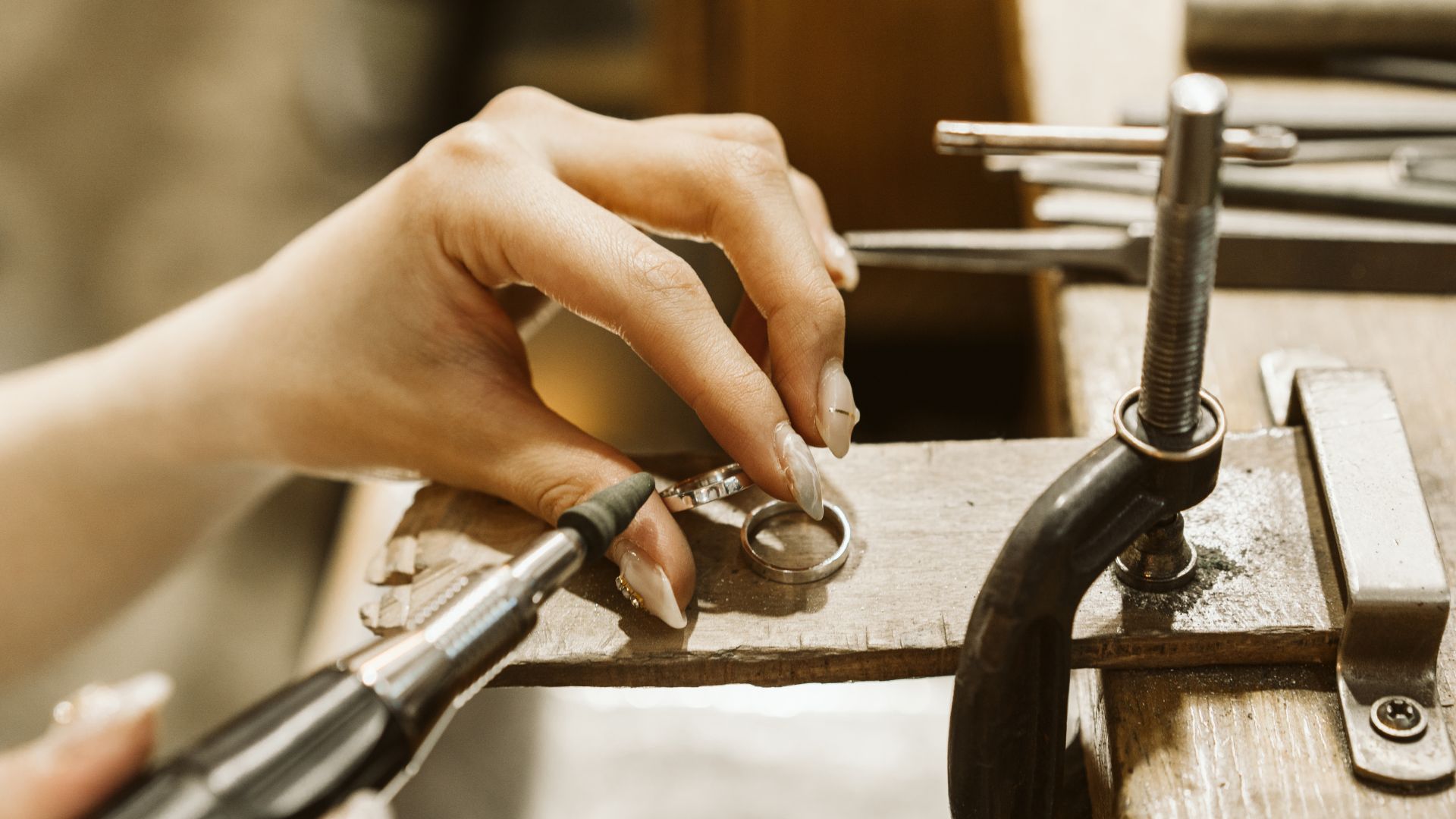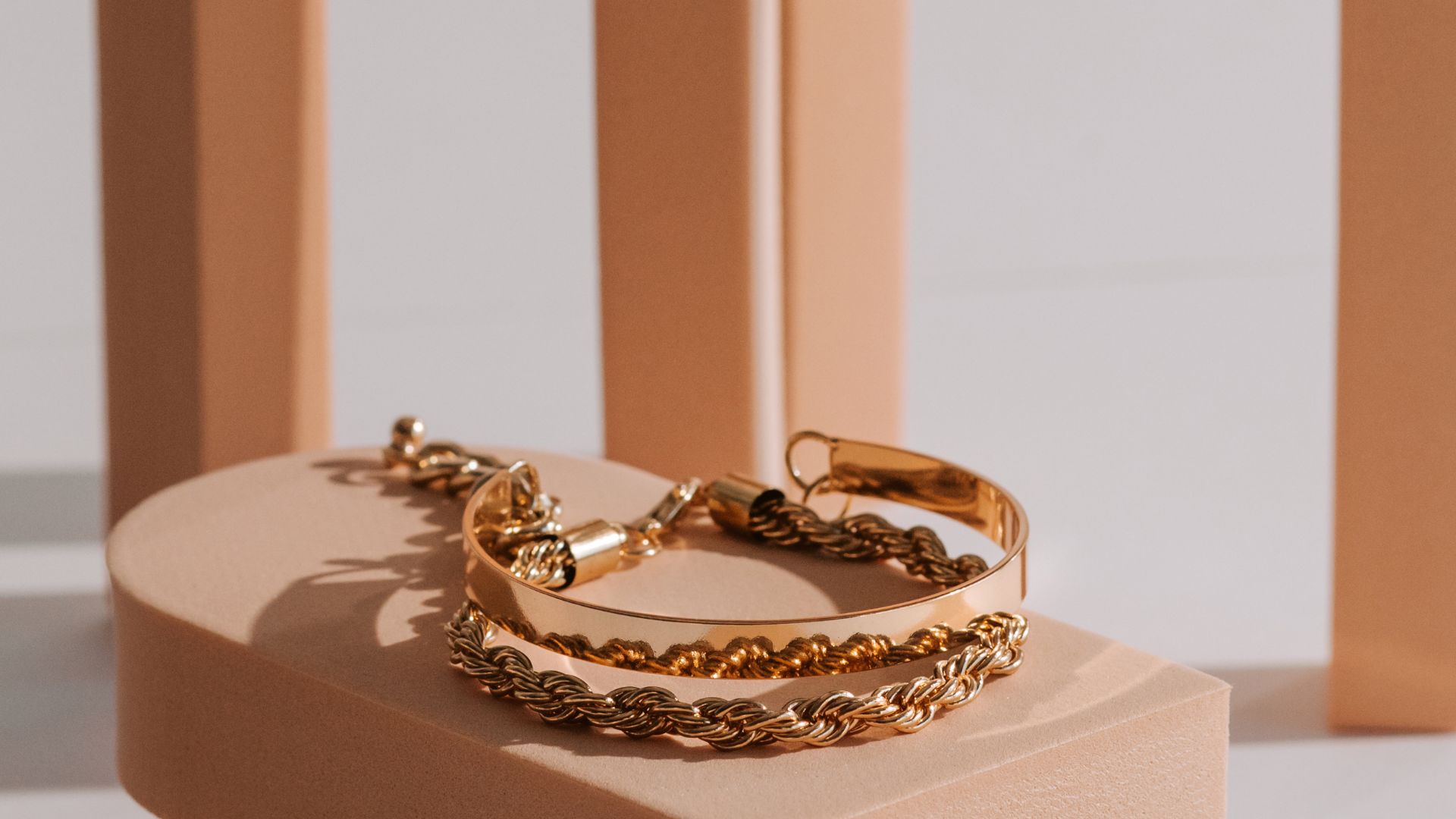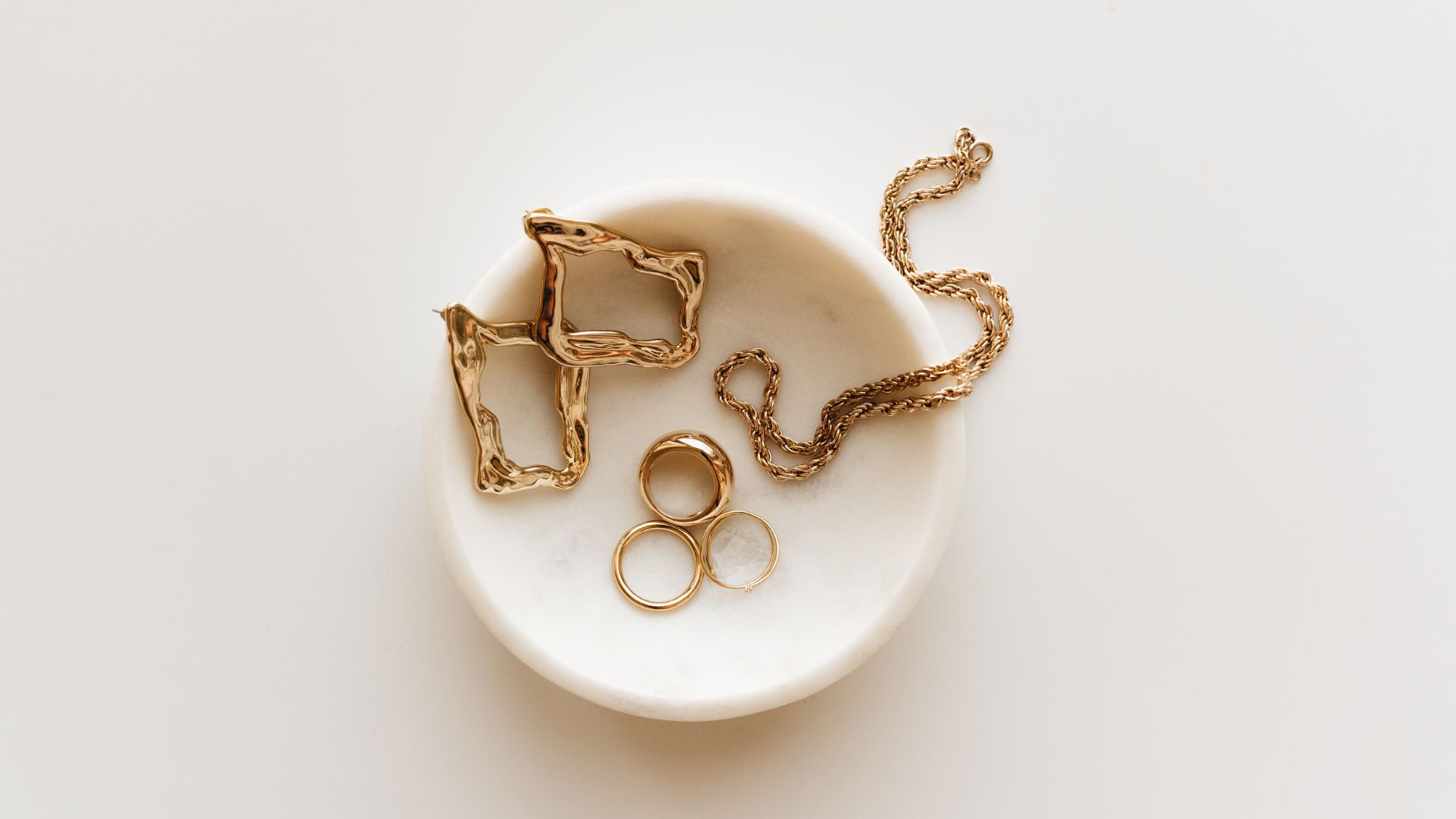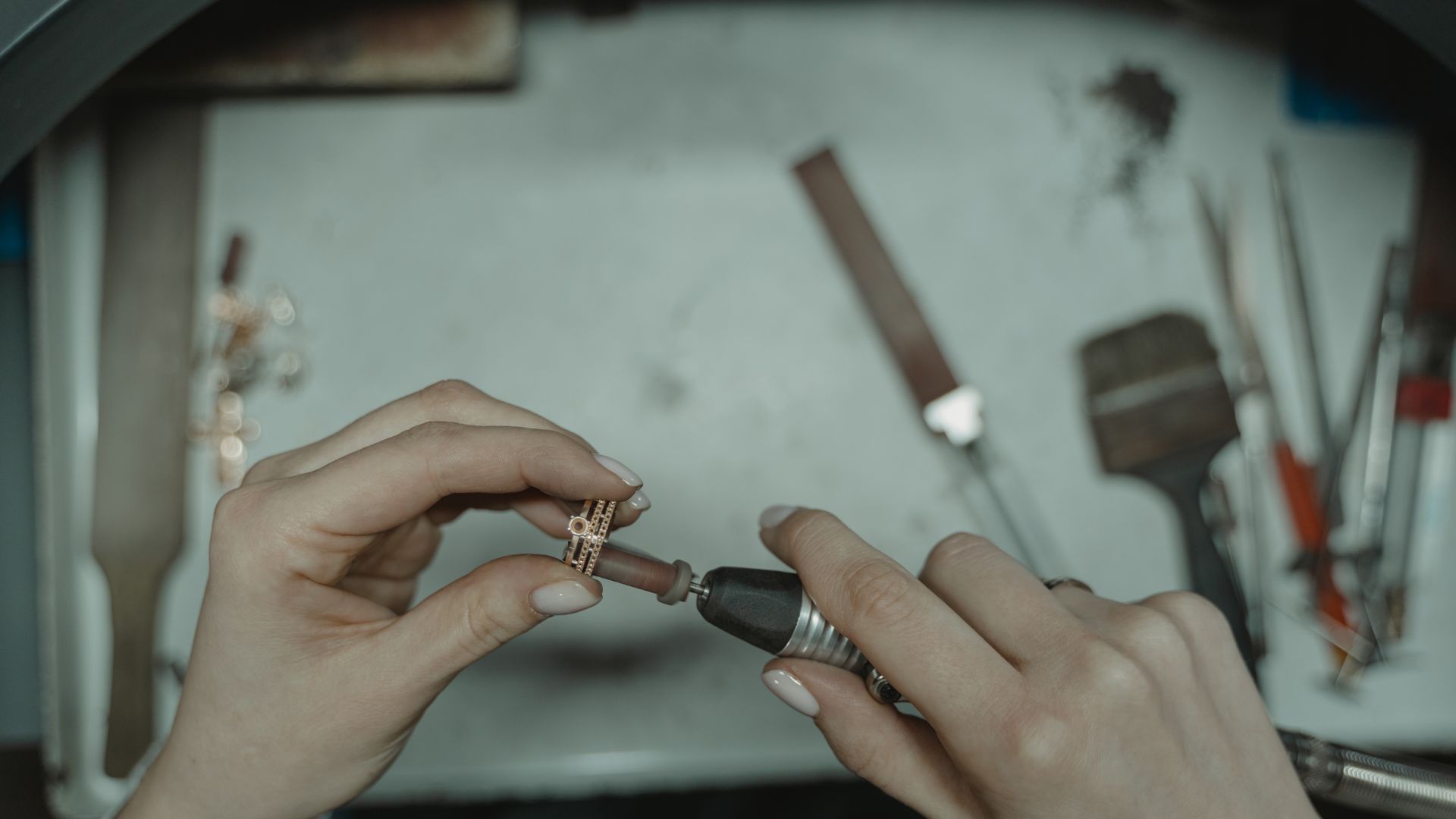
The tools every goldsmith needs in their workshop
Goldsmithing is an intricate and rewarding craft that combines art with skill. To create high-quality gold jewellery, goldsmiths need to have access to a variety of tools designed for different stages of the process. Whether you’re a seasoned professional or just starting out, having the right tools is essential for precision, efficiency, and the overall success of your work.
In this article, we’ll go over the basic tools every goldsmith needs in their workshop, including specialized tools for casting, polishing, and gemstone setting, as well as tips for setting up a safe and efficient workspace:
- Basic tools
- Specialised tools
- Workshops and safety
- How the right tools contribute to producing high-quality gold jewelry
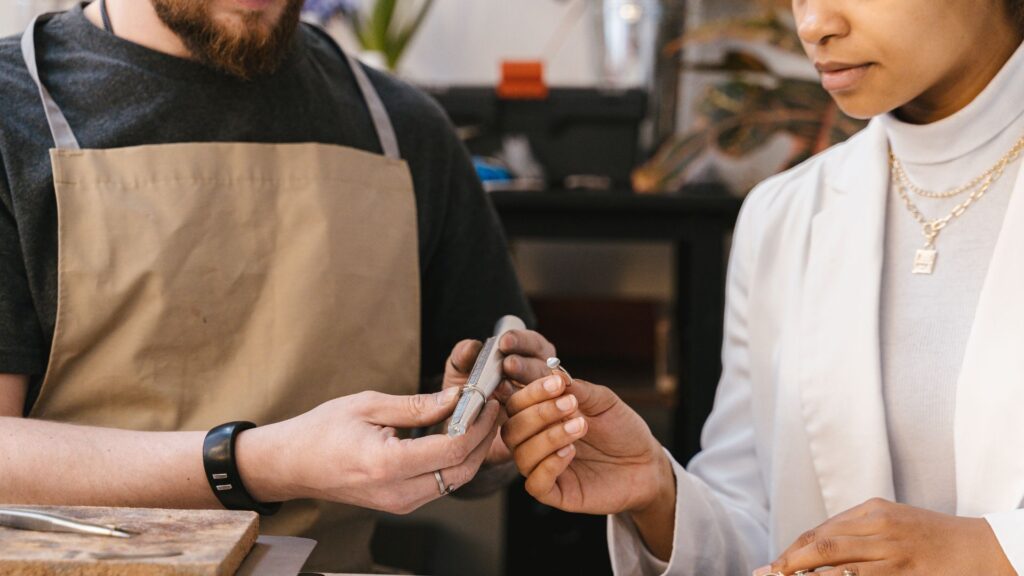
Basic tools
At the heart of any goldsmith’s toolkit are the basic tools that help shape, cut, and refine the gold.
“Having the right tools is the key to unlocking the potential of goldsmithing, transforming raw metal into beautiful, lasting works of art.”
These tools are used for the fundamental tasks that make up the goldsmithing process. Let’s take a look at the essential tools every goldsmith should have:
1. Hammers
Hammers are indispensable for shaping and forming gold. There are several types of hammers, each designed for different tasks:
- Chasing Hammer: Used for shaping the surface of the metal, this hammer has a smooth face and is commonly used in detailed handwork and creating texture.
- Riveting Hammer: This hammer is ideal for driving small rivets, often used in joining metal pieces together.
- Ball Peen Hammer: A more versatile hammer, used for shaping, bending, and forming metal into precise curves.
Having a range of hammers allows goldsmiths to choose the right one for specific tasks, whether that’s forming smooth, even curves or adding texture to the metal.
2. Pliers
Pliers are a must-have for gripping, bending, twisting, and holding small metal pieces. They come in different shapes and sizes for various purposes:
- Flat-Nose Pliers: Perfect for gripping and bending metal without leaving marks, often used for straightening wire or holding small items in place.
- Round-Nose Pliers: These are used for creating loops or bends in wire, making them essential for jewellery-making.
- Chain-Nose Pliers: These have a fine, flat edge that’s perfect for working with delicate metalwork and precise tasks like bending or twisting thin wires.
Pliers allow goldsmiths to handle small and intricate components with ease, making them one of the most frequently used tools in the workshop.
3. Files
Files are used to smooth rough edges, shape metal, and refine details. They come in various sizes and shapes to work on different surfaces:
- Flat Files: Used for smoothing and flattening surfaces.
- Half-Round Files: Ideal for working on curves or round surfaces.
- Pillar Files: Used for smaller, more precise work, particularly when shaping rings or other detailed pieces.
Files help refine your work, ensuring that each piece of jewellery is smooth, well-finished, and ready for the next stage of production.
4. Saws
A jeweller’s saw is an essential tool for cutting metal. This saw features a thin blade that allows for fine, precise cuts. The saw is used to cut out shapes, remove excess metal, and carve intricate designs. Saw blades come in various thicknesses and teeth sizes, with thinner blades used for finer, more detailed cuts. A jeweller’s saw is a must-have for anyone looking to work with metal in an intricate, detailed way.
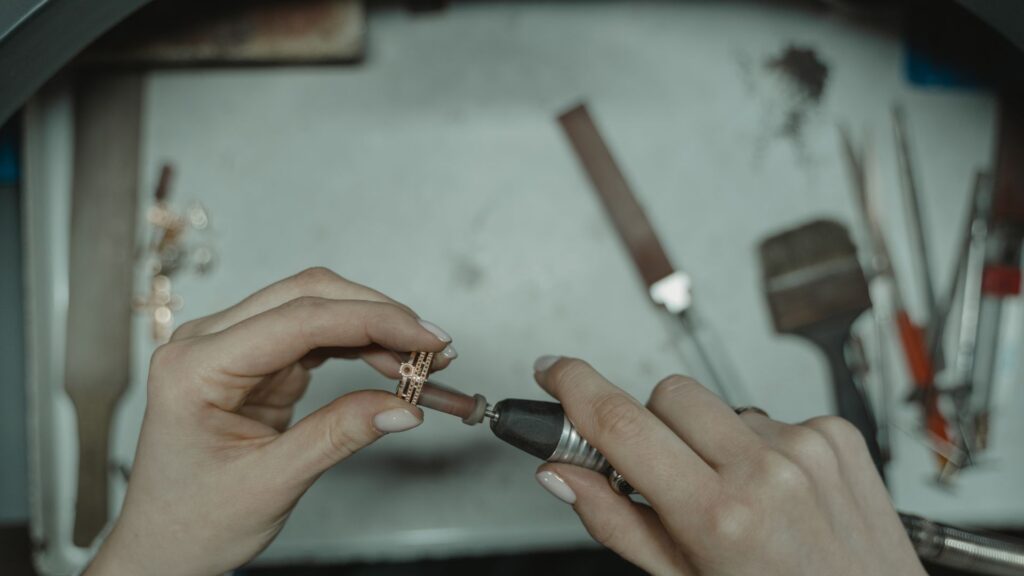
Specialised tools
Beyond the basic tools, there are several specialised tools that goldsmiths rely on for specific tasks, like casting, polishing, and gemstone setting. These tools help to create the final details and finishes that make gold jewellery unique and high-quality.
1. Casting tools
Casting is a crucial technique in goldsmithing used to create intricate designs or mass-produce certain elements of jewellery. For casting, goldsmiths require:
- Casting Furnace: Used to melt the gold to its liquid form, ready for pouring into moulds.
- Moulds: Moulds can be made of various materials, such as graphite or silicone, and are used to create the shape of the jewellery.
- Vacuum Casting Machine: A machine that creates a vacuum to eliminate air pockets in the molten gold, ensuring the casting process is clean and precise.
Casting tools are essential for creating pieces that require specific shapes or complex details that would be difficult to achieve by hand.
2. Polishing tools
Polishing is the final step in bringing out the shine and brilliance of gold jewellery. Some essential polishing tools include:
- Polishing Motor: A motorised tool with a spinning wheel used for buffing the surface of the jewellery to a smooth, high-gloss finish.
- Polishing Cloths: Used by hand for delicate polishing and ensuring that smaller parts of the piece are polished without damaging the design.
These tools help achieve a professional, flawless finish, making the jewellery shine and look its best.
3. Stone setting tools
For setting gemstones into gold jewellery, goldsmiths need a set of specialised tools:
- Prong Pusher: Used to bend prongs over gemstones to hold them securely in place.
- Bezel Roller: A tool that helps set stones in bezel settings by pressing the metal around the edges of the stone.
- Setting Bur: A rotary tool used to carve and shape the gold around the stone for a perfect fit.
Stone-setting tools are essential for ensuring that gemstones are securely and aesthetically set into the metal.
Workshops and safety
A well-organised and safe workshop is essential for a goldsmith to work efficiently and safely. A goldsmith’s workshop needs to be equipped with proper lighting, storage, and ventilation. Proper ventilation is especially important when working with materials that can produce fumes, such as when soldering or casting metals. Many workshops also include fume extractors to safely direct harmful fumes away from the workspace.
In terms of safety gear, goldsmiths should always wear protective gloves, safety goggles, and a dust mask to protect themselves from hot metals, chemicals, and fine dust particles. Proper safety precautions ensure a safe working environment and prevent injuries or health issues.
How the right tools contribute to producing high-quality gold jewelry
Having the right tools is crucial for any goldsmith looking to produce high-quality jewellery. The combination of basic tools, such as hammers and saws, with specialised tools for casting, polishing, and stone setting, allows goldsmiths to create intricate designs and flawless finishes. By investing in quality tools and setting up a safe, efficient workspace, goldsmiths can work with precision and care, ultimately producing pieces that are not only beautiful but also durable and functional.
Let’s recap today’s article:
- Essential tools for goldsmithing include hammers, pliers, files, and saws, which are used for shaping, cutting, and refining metal.
- Tools for casting, polishing, and setting gemstones, such as casting furnaces, polishing motors, and stone-setting tools, are necessary for producing high-quality jewellery.
- The casting process requires specific tools like a casting furnace and moulds to create intricate designs, as well as a vacuum casting machine for precision.
- Polishing tools, including motors and cloths, are used to give jewellery a smooth, high-gloss finish that enhances its appearance.
- A goldsmith’s workshop should be well-organised with proper ventilation, lighting, and safety gear, including gloves and goggles, to ensure a safe and efficient workspace.
Whether you’re just starting your goldsmithing journey or have years of experience, having the right tools at your disposal is key to achieving success. The quality of the tools you use directly impacts the quality of the jewellery you create, and investing in good equipment will pay off in the long run with stunning, professional results.
